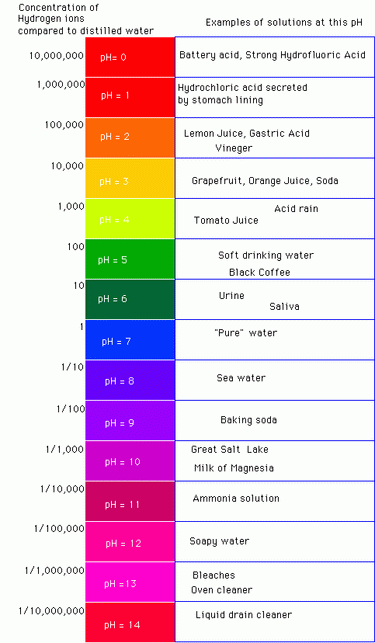pH
The term pH is used to describe the activity of the hydrogen ion in a solution. It measures the relative acidity and alkalinity of the solution. It is not a measure of quantity but of the relationship between acidity and alkalinity. The pH scale ranges from 0 to 14, with a value of 7 considered neutral. Pure water is considered to be neutral, ph 7.0, although most water ranges between 6.0 and 8.0 on the scale. Values above 7.0 are considered alkaline and below 7.0 acidic.
The pH value of water decreases as the amount of carbon dioxide, CO2, increases, and pH increases as the amount of bicarbonate alkalinity increases. The ratio of carbon dioxide and bicarbonate alkalinity within the ranges of 3.6 to 8.4 is an indication of the pH value of the water.
Treatment: The pH can be raised by feeding soda ash (sodium carbonate), caustic soda (sodium hydroxide), sodium bicarbonate, or potassium hydroxide into the water. Calcite (calcium carbonate, CaCO3) and/or Corosex (MgO--magnesium oxide) are used as filters to increase pH from the 5 and 6 range. The peak flow a neutralizing filters is limited to about 6 gpm per square foot of medium. Downflow filters must be backwashed frequently to prevent "cementing" of the bed. Upflow filters do not experience cementing of the bed, but they do not work if iron is present in the water. Lowering pH is less frequently done, but can be accomplished by feeding a variety of acids with a standard metering pump. Both sulfuric and hydrochloric acids will work, but weaker acids are usually preferred. The most commonly used are phosphoric acid (H3PO4), acetic acid (CH3COOH), and citric acid (C6H8O7). Vinegar can also be injected to lower pH. |
|
|
|
|
|

